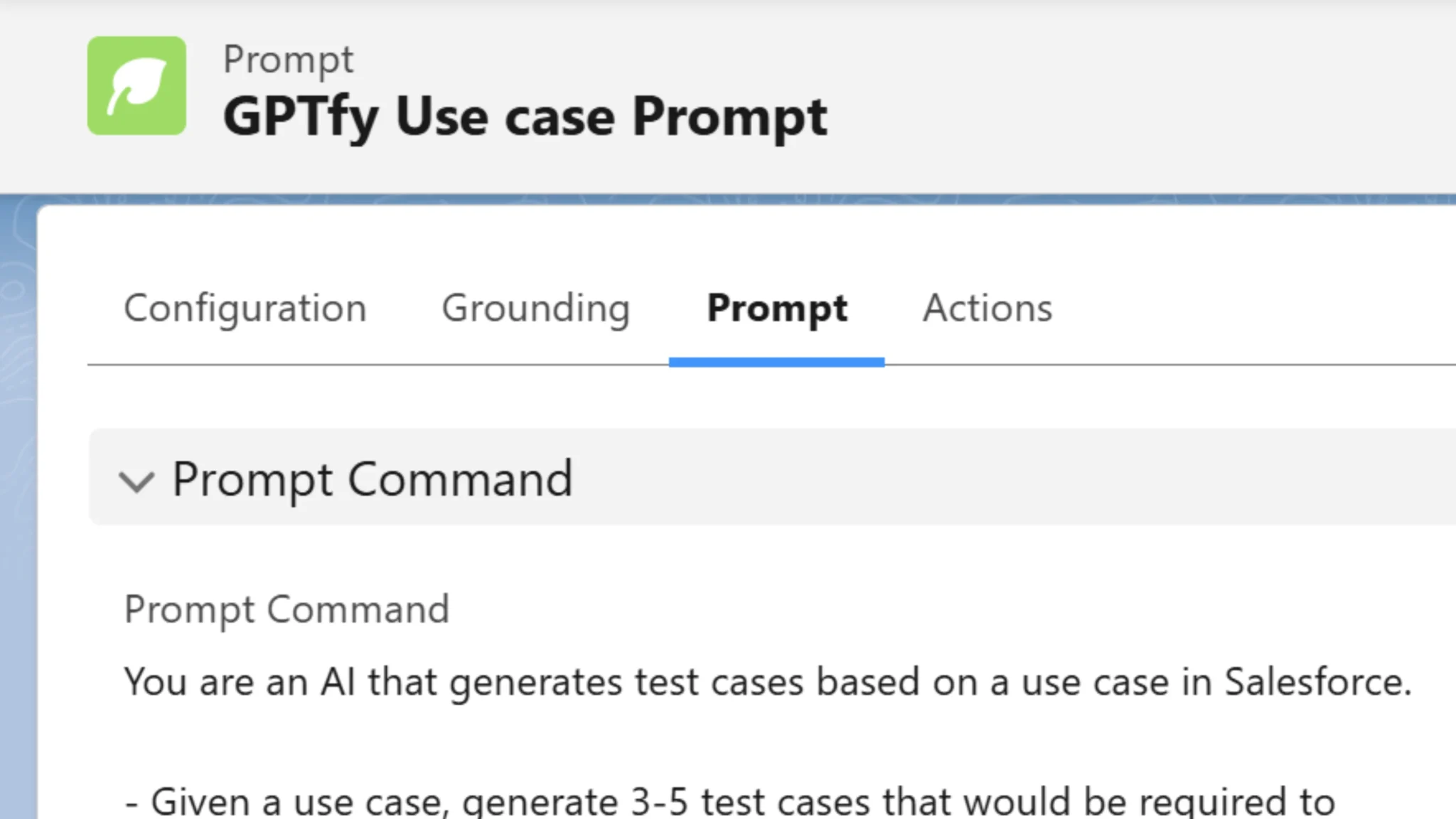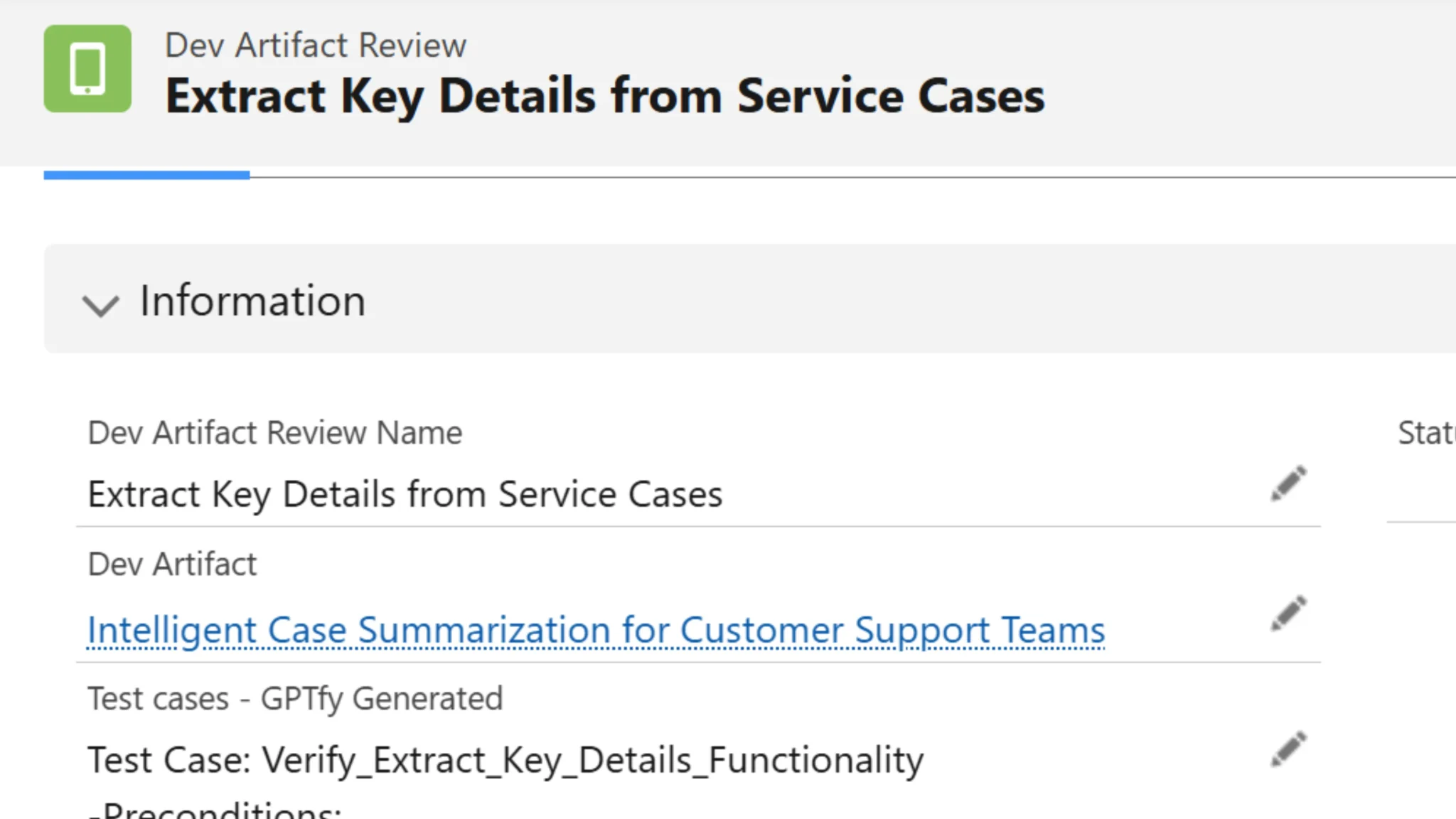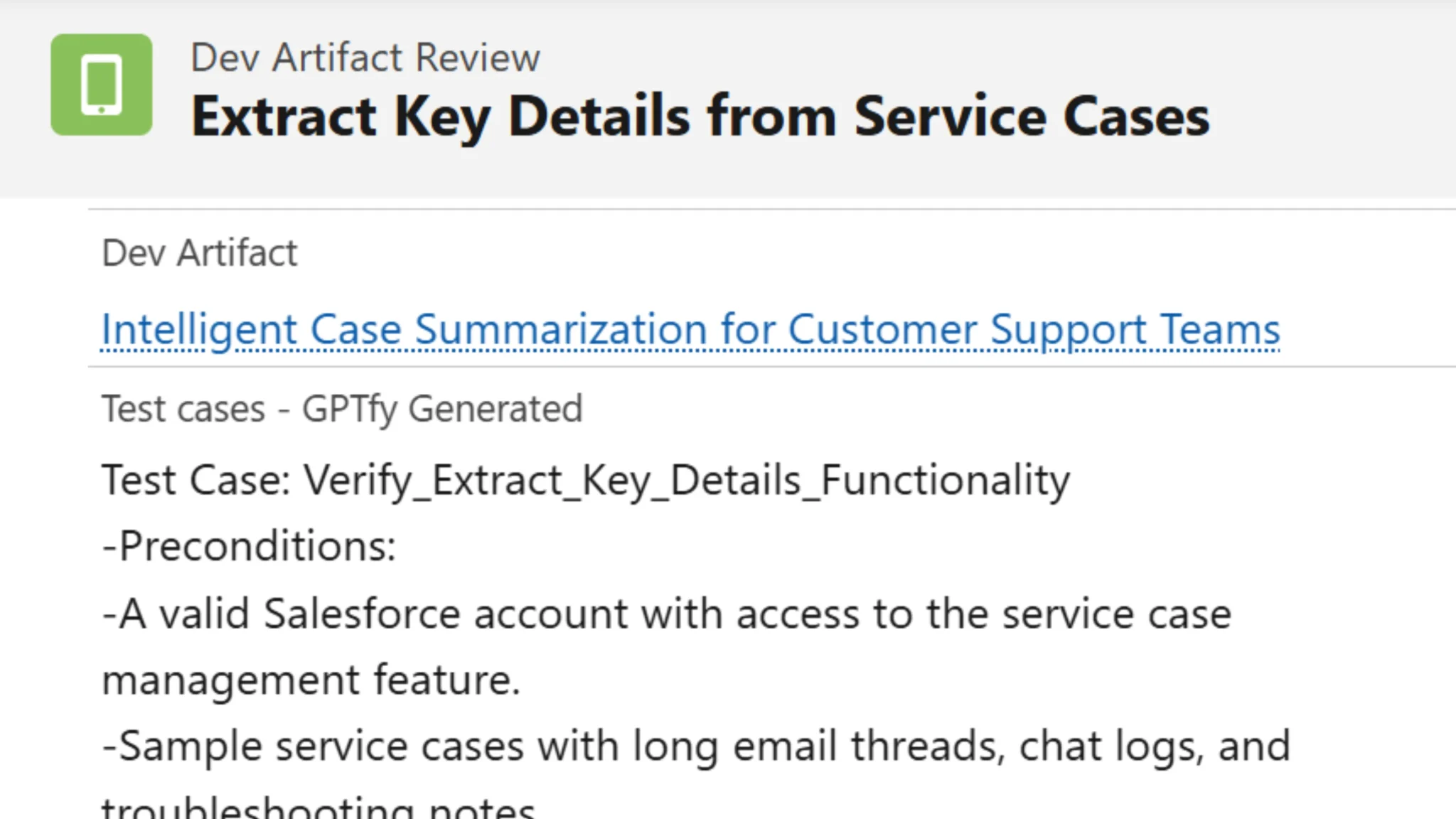How to Automate Test Cases from User Stories in Salesforce Using AI
TL;DR:
Use GPTfy/AI in Salesforce to automate test case creation in Salesforce with a two-stage AI process – first generating high-level test cases from user stories, then expanding each into detailed test scripts using flows, saving hours of manual work and ensuring consistent quality.
Not a fan of reading articles? Check out the video here:
## What? A practical guide on using AI to automatically generate comprehensive test cases from Salesforce user stories, streamlining your quality assurance process.Who?
Salesforce admins, developers, QA engineers, and technical leaders who want to automate the tedious process of creating test cases while maintaining quality standards.
Why?
To accelerate software delivery cycles and reduce manual effort in test case creation.
What can you do with it?
- Automate QA Documentation: Generate detailed test cases directly from user stories
- Standardize Testing Approach: Ensure consistent test coverage across your Salesforce implementation
- Accelerate Development Cycles: Reduce the time between requirements and testing
- Improve Test Quality: Create comprehensive test scenarios that developers might miss
The Challenge with Manual Test Case Creation
If you've ever spent hours writing test cases for a seemingly simple user story, you know the pain. What should be a straightforward process becomes a time-consuming task that often creates bottlenecks in your development workflow.
Traditional test case creation requires:
- Interpreting user stories (sometimes vague ones)
- Imagining all possible scenarios
- Documenting steps in excruciating detail
- Creating pre-conditions and expected results
- Formatting everything consistently
This manual process is not just slow—it's prone to gaps in coverage and inconsistencies in quality.
How It Works: The Two-Prompt Process
AI reads your user story, suggests test cases, and then Salesforce flows turn those into detailed test scripts – all automatically. The system uses custom objects to store everything and keeps the relationship between stories and tests clear.
Stage 1: Generate Test Case List

The first prompt analyzes your user story and generates 3-5 high-level test cases as a comma-separated list. This prompt focuses on identifying key scenarios that should be tested.
For example, with a user story about cloning a prompt with a modified naming convention, the AI might generate:
- Verify that the clone prompt creates a new record with modified name
- Validate cloned record includes all related records
- Check error handling when naming convention is invalid
Stage 2: Generate Detailed Test Scripts

The second prompt takes each high-level test case and transforms it into a comprehensive test script with:
- Preconditions
- Step-by-step testing procedures
- Expected results
- Additional notes or considerations
The entire process is automated through Salesforce flows that:
- Call the first prompt to generate test cases
- Create records for each test case
- Call the second prompt to expand each test case into a full script
- Save everything as related records in Salesforce
Implementation Steps
Setting up this solution is straightforward:
-
Set Up Custom Objects
Create a custom object to store your user stories. This will be the parent object where you'll input the requirements. -
Configure First Prompt
Create a prompt on the parent object that analyzes the user story and generates test cases. This prompt will update a field on the parent record with the test cases as a comma-separated list. -
Create Child Records
After the field is updated with test cases, child records are automatically created for each test case with a reference back to the parent user story. -
Configure Second Prompt
Create another prompt on the child object that expands each test case into detailed test steps. When this prompt runs, it fills in all the necessary testing details.
The Real-World Example

Using GPTfy in Salesforce, you can automatically generate test cases from this user story. When the first prompt analyzes this requirement, it identifies key testing scenarios as a comma-separated list.
The flow subsequently generates individual records for each test case. Ultimately, the second prompt elaborates these high-level test cases into detailed test scripts that include preconditions, steps, and expected results – all without manual intervention.
This approach ensures consistent test coverage while saving hours of manual test writing, allowing your team to focus on implementation rather than documentation.
Beyond Basic Test Generation
The real power of this approach comes from its extensibility:
Metadata Awareness
You can enhance your prompts to incorporate Salesforce metadata, making them aware of:
- Object schemas
- Field definitions
- Page layouts
- Permission sets
This allows the AI to generate more precise test cases that reference actual field names, required fields, and validation rules.
Customizing to Your Standards
Since you control the prompts, you can tailor them to your organization's testing standards:
- Format test cases according to your documentation guidelines
- Include organization-specific testing considerations
- Add references to test data sets or test environments
- Include custom validations or compliance checks
The GPTfy Advantage
This entire process is powered by GPTfy, an AppExchange security-approved app that brings AI capabilities to your Salesforce org without requiring Data Cloud or other expensive add-ons.
Key advantages:
- Connect to any AI model you prefer (Azure, AWS, Google, Llama, etc.)
- Keep data within your security perimeter
- No need for additional Salesforce licenses
- Fully declarative configuration
Best of all, GPTfy isn't limited to QA automation – you can use the same platform for sales, service, and other use cases.
Conclusion
AI-powered test case generation transforms QA for Salesforce teams. With GPTfy's two-stage process, you can convert the testing bottleneck into a streamlined workflow that improves quality while saving substantial time.
Start simple and gradually enhance your prompts with metadata awareness and organization-specific standards. Since GPTfy works with your choice of AI models, you maintain control over data and costs, bringing AI benefits not just to customer-facing operations but to your internal development processes for faster delivery and more innovation.
